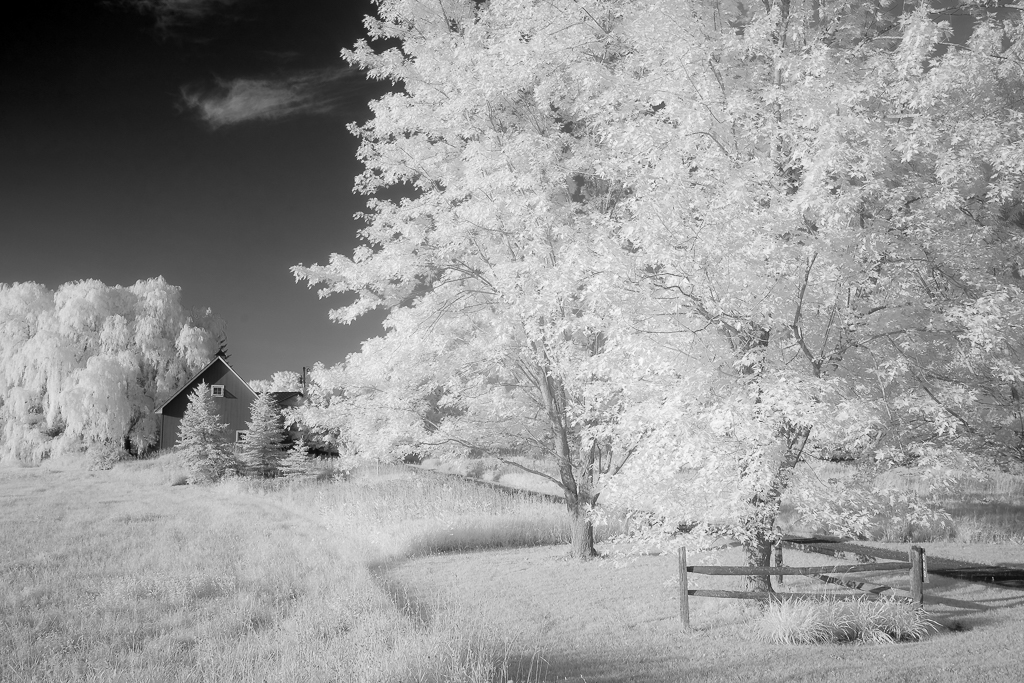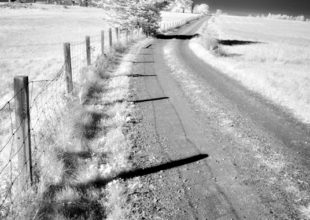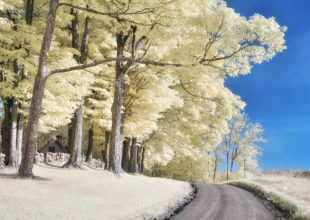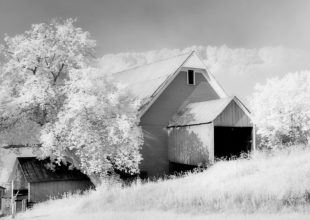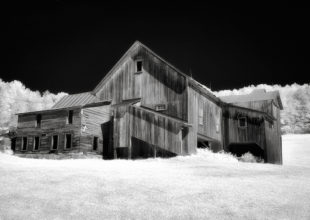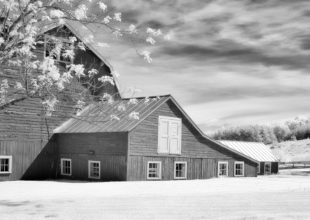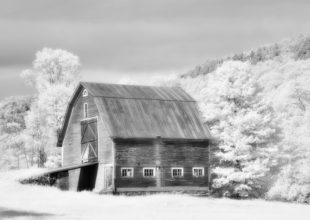Light is the lifeblood of any good photo, in fact, it is the only thing. We get up early to catch morning light and stay out late to catch the last rays of twilight. We look to take advantage of diffused light on cloudy days and directional light when the sun is playing peek-a-boo with the clouds. We can also classify our light by temperatures such as warm light and cool light and we look to avoid the dreaded grey light of a dark cloudy day. Light is also directional, light can fall on its subject from the front, back, or side. All of these types of light are used by photographers to create engaging images. Vermont with its rolling hills and mountainous terrain often sandwiched by long stretches of farmlands is a perfect subject for all of these forms of light.
There is one additional form of light, it can’t be seen but it can be photographed – Infrared light. Infrared light is in the spectrum of light that you can not see, it is just above the visual spectrum. It falls in the red light spectrum which gives it it’s special qualities. Think of the light from your TV remote to your TV or cable box. Infrared light and Vermont come together nicely. Infrared landscape photography is best done during the middle part of the day when the sun is high in the sky and hot. Photographers who are used to getting up at 4 AM and staying out to 10 PM to capture summer’s last light, find this time frame a welcome change.
So how can you photograph light you can’t see? Well, you need to make some camera modifications, more specific modifications to the silicon chip in your camera. Actually, all chips in all digital cameras can see infrared light but since it would interfere with your photos they attach a filter to block infrared light. Modifying your camera to “see” only IR light is just a matter of reversing this process. Remove the infrared filter and replace it with a visible light filter so now your camera only sees infrared light. You can do this yourself however, it is not recommended. It is best to use a third party vendor, my choice is LifePixel (www.lifepixel.com). Life Pixel gives you a choice of filters for your conversion. You can get Deep color IR, color IR or black & white. My choice is color IR which gives a nice smooth collection of color and I can then do a post-processing black & white conversion.
Vermont as seen through the lens of an IR camera is both beautiful and surreal. The thick green vegetation of the summer creates a canopy of wispy white that can often be mistaken by a viewer at snowy winter scene. When explained the viewer is often drawn to the images and the unique light of its composition. The elements of a natural Vermont landscape are perfect subjects for this medium. I find the nostalgia of black & white infrared complements this the best although there are times when color infrared works best. It’s a personal choice.
Check out the infrared gallery on this site for more examples of both black & white infrared and color photography.
